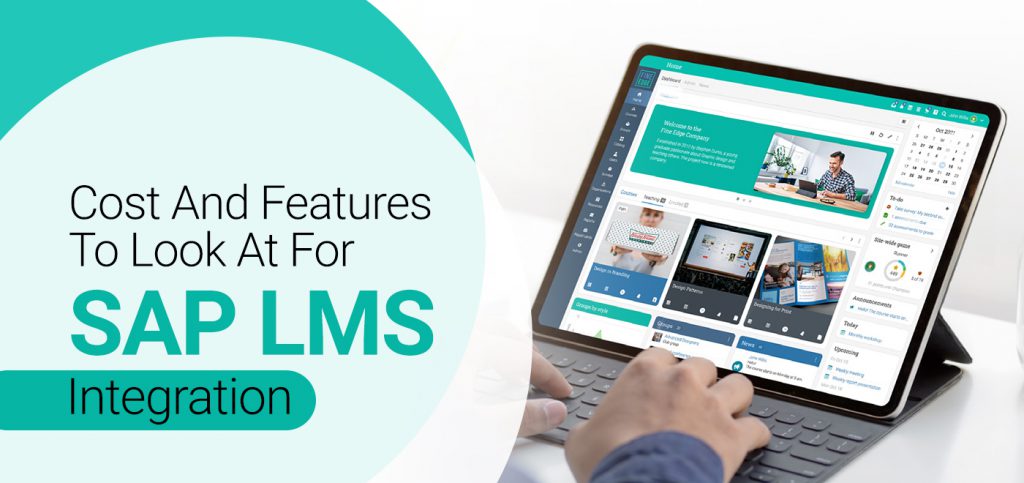As businesses are growing fastly they have to maintain many things. Like performance on a priority basis, transformative results, productivity, continuous updation, and more. Here you can create and deliver your courses with the best free LMS platform at a low price for students & get white-label services. To acquire that needs resources, money, time, and effort. Yet, this result seems brutal but can be easily achieved by blending a solid SAP LMS. Let’s get to know what is SAP and how merging with LMS will allow effective training and productivity.
Overview of SAP and Its Uses
Introduced as Systemanalyse Programmentwicklung, SAP originated in 1972 by 5 people. The first software introduced was SAP R/2 and SAP R/3. It also introduced a globally used standard for enterprise resource planning. The current software SAP S/4HANA has taken ERP to the next level using better in-memory computing and Artificial Intelligence to process vast data.
Today the small-scaling company has become a multinational enterprise with more than 105,000 employees worldwide. SAP’s integration with different management systems is connecting all kinds of businesses, offering an intelligent suite, thereby replacing process-driven, conventional platforms.
The legacy siloed system was arduous to manage as every database contained multiple data and was not interconnected. This made the employees work more to obtain data from each database. Moreover, storing a vast amount of data costs much. Without the centralized system, data redundancy was also one of the biggest issues to deal with.
After the inception of SAP software, data management became much easier. Companies were able to centralize data stored in different databases, which further assisted them to manage even the most complex business processes seamlessly. Additionally, organizations were able to access real-time insights that made them identify the loopholes, improve efficiency, raise productivity, and enhance customer experiences.
How Does SAP Work?
SAP can be used by any type of business, ranging from small to mid to even large organizations. Every industry solution, platform, application, and even technology can be designed and mapped with SAP.
SAP can be easily implemented on the on-premise as well as cloud to analyze and design an efficient value chain for the organization. SAP works by collecting and processing the data, like picking raw material to production to ensure complete customer satisfaction. Additionally, SAP can assist companies to forecast the need for improvements or repairing a machine and even revenue generation of the upcoming year.
One of the chief advantages of SAP is it can seamlessly link operational data on business processes with experienced data. Companies, with the help of these data, can underline the market needs & customer expectations and plan strategies accordingly. To summarize, SAP supports organizations to run their business profitably, grow sustainably, and continuously adapt to the changing market.
How Can Learning Turn Into Achieving With SAP LMS?
Delivering or getting the training you need ensures better engagement. And how about that training is delivered from a flexible, complete, and learner-centered training platform that can meet individual learners’ needs and preferences? That sounds like what you have been looking for.
With SAP, LMS integration is like a cakewalk. Together they can transform the business outcomes enabling people to be more productive & engage more for continuous learning while keeping pace with the technology advances.
This accelerated blend of the two most powerful technologies, SAP and LMS, can develop a new learning experience among individuals.
- Integrating SAP with LMS helps maximize business performance and optimize your enterprise by developing skills in the employees with different roles, responsibilities, and levels.
- SAP LMS integration is a perfect combination to help you stay ahead of the competition. Companies can create a culture of always learning and winning through the challenges with innovative & faster solutions.
- Training with SAP integration helps improve user experience. SAP software adoption delivers fluidity in delivering best-in-class training, thereby making more innovative and effective ways to work.
SAP integration with LMS supports employee training and reduces the risks related to compliance that deliver a modern learning experience.
Statistics say that organizations have observed 7-13% improvement in the key performance of their end-users. SAP LMS integration benefited $1million per 1000 SAP users and raised over 671% ROI in 3 years.
More than 15% of organizations were satisfied with the SAP solutions that helped them offer a continuous 45 hours of training for the system administrator.
Let’s further explore the features of SAP to ensure a successful integration with your learning management system.
Features of SAP LMS Integration
In order to achieve proven, measurable, and transformative outcomes, integrating these features in your custom LMS development solution will surely help you achieve them.
With SAP LMS integration, companies can allow their learners to practice skills hands-on and build experience. Companies can also preconfigure the data or complete courses to carry out their course exercise anywhere and anytime.
The SAP LMS integration consists of a Web-based learning portal, course administrator portal, training management, Compliance training, eCommerce integration for enterprise-grade training, authoring environment, and instructor portal. Let us discuss them one after the other.
Learning Portal
A learning portal is a perfect place to find and participate in suitable courses. Learners leverage personalize access to course offerings that includes virtual classroom training, web-based training, online tests, and more. Learners can search, schedule, select, participate and cancel or reschedule bookings. Learners can also keep track of their activities and follow a personal recommendation by the LMS.
Content Management System
It is recommended to have a customizable and flexible content management system when you get an elearning software development solution. A CMS helps organizations store abundant data while administering them. It is a perfect feature that supports SAP and better management of the training material and other data.
Instructor Portal
The portal is relevant for the educationists/trainers/instructors/tutors to access all tasks. The portal also displays an overview of the employees/learners registered for courses, their assignments, progress, failures & more. Instructors can easily access relevant back-end functions and perform relevant activities in the training management system for the execution of tasks.
Training Management
This feature supports an integral part of the SAP solution. Through training management admins can plan, manage, & design a course catalog, direct a link to obtain training material from CMS, create classroom courses, assign a course to the participants, & much more.
Course Administration Portal
The chief management portal manages both SAP and LMS. The portal provides a quick view of current tasks, access functions of training management, manage courses, reserve rooms, schedule classes for the instructors, follow up with the courses, manage to bill and manage participation.
Authoring Environment
Creating a course is the responsibility of an author, hence a portal must be assigned for the author to create and upload the relevant content. The environment lets the author even design the course and tests, store the content in the content management system, and publish course content.
Learning Recommendations
With SAP and LMS integration, companies can define development paths that help employees enhance their skills. Linking the right content helps in the clear development of career paths, assigned profiles, recommendations, and goals.
Blended and Social Learning
An advanced learning management system integrated with SAP offers collaborative and community-based learning. The responsive platform of learning lets learners access content, such as microlearning and e-learning videos.
SAP Content Stream
Companies can engage learners through recommendations related to curated content and subject-matter expertise that is based on goals, preferences, and interests.
Extended Learning
SAP integration supports LMS with expert-curated content. Companies can engage learners from gamification and other learning innovations.
Automate Assignment
With SAP-integrated LMS, companies can optimize their compliance training and automate their learning assignments. Companies can also secure their documents and configure them based on certain criteria, like policies or signatures.
Comprehensive Reporting & Validated SaaS Environment
SAP supports and helps meet government reporting requirements such as compliance training status, legal mandates & more. Companies can also smoothly manage stringent regulatory updates/changes and provide timely validated testing.
Commerce and Promotion Marketing
SAP LMS integration supports eCommerce capabilities for the companies to process payment transactions, such as credit card, debit card, or e-wallet transactions. Companies can offer their learners specific pricing rules, special discounts, and chargeback codes for internal accounting management.
Customizable Learning Designs
SAP offers easy to configure exceptional site landing pages for learning management systems. Companies can create unique experiences for their learners that also comply with their unique business brand.
In A Nutshell –
To summarize, SAP learning management integration is a profitable blend and valuable investment that has helped thousands of companies through continuous enablement. SAP integration promises to deliver greater business outcomes and success by decentralizing data management and a single view into multiple business functions. Businesses can undoubtedly improve operational efficiency, raise productivity, and enhance learner experiences by allowing cloud-based accessibility to a wide range of learning content with a range of options to fit every business needs.
Companies can assess educational needs, create a strategic training plan, enable execution services, and coordinate with organizational changes all through SAP LMS integration. So, embrace a new learning culture and improve employee skills and training of external audiences without any hassle with SAP LMS integration solution.
Author’s Bio: Alicia works with the editorial team of A3logics, a leading company offering mobile app development services. Exploring the latest technologies, reading about them, and writing her views have always been her passion. She seeks new opportunities to express her opinions, explore technological advancements, and document the details. You can always find her enjoying books or articles about varied topics or jotting down her ideas in a notebook.







